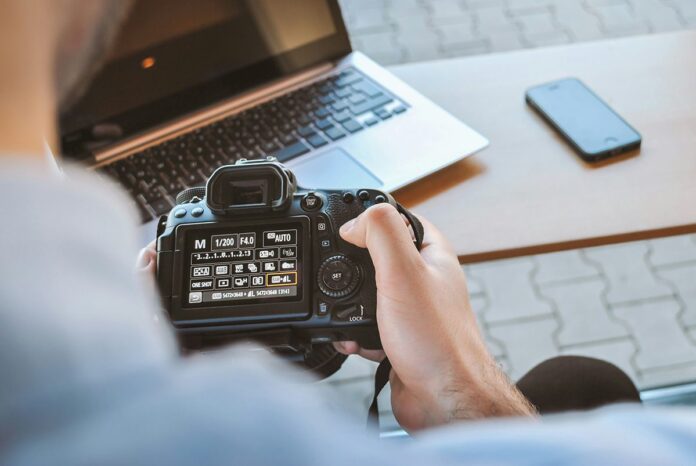Introducing photography genres to K-12 students is a powerful way to expand their understanding of art and the world around them. Like painting, photography encompasses various genres, each with its own rules, history, and visual language. Introducing students to these genres exposes students to different styles and processes, prompts them to make connections with other time periods, and develops technical skills. Whether you’re new to teaching photography or looking to expand your curriculum, understanding these genres can help you guide students through their photography journey.
For those new to teaching photography, be sure to check out these foundational resources:
Explore the photography genres below and bookmark your favorites to share with your students this year!
Note: Be sure to review all resources and preview all artists before determining if they are appropriate to share with your students.
It’s important for students to recognize that photographic trends, aesthetics, and techniques often come full circle. To do so, expose students to many genres and styles of photography so they can make connections to their own work. What may seem like a new or rebellious approach often has deep historical roots.
For example, many photography students today intentionally use flash photography or create out-of-focus images as an aesthetic choice. These qualities were common in early photography when film and technical limitations produced similar results—particularly in snapshot or documentary photos. By showing students examples of older images, such as Julia Margaret Cameron’s soft-focus portraits or vintage flash photography from the 1960s and 70s, you can show how these trends resurface and provide a larger context to their work.

Portrait
Portrait photography focuses on capturing a subject’s personality, mood, or expression. Whether formal or candid, portraits tell a story about the person. Lighting, pose, and background all play an essential role in presenting the subject.
Julia Margaret Cameron, Sir John Herschel (1867)
Cameron’s portrait of Herschel, a distinguished scientist, demonstrates her revolutionary approach to portraiture. Known for her pioneering use of soft focus and dramatic lighting, Cameron’s style emphasized emotional depth and mood over the precise, clear detail of the time. Herschel is captured not as a formal academic but as a reflective figure, humanizing his intellectual stature. Discussing this image helps students understand how photographers manipulate light and focus to shape the narrative of a portrait.
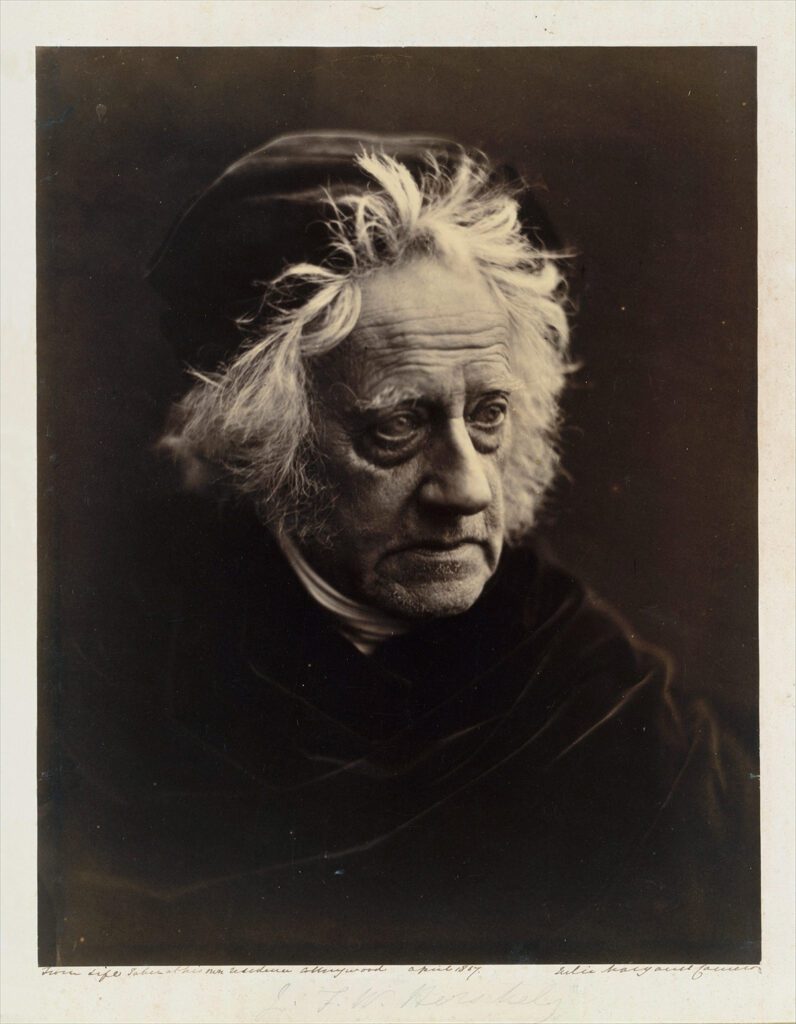
Arnold Newman, Igor Stravinsky (1946)
Newman’s portrait of the Russian composer Igor Stravinsky is a masterpiece of environmental portraiture. Rather than focusing solely on Stravinsky’s face, Newman uses the grand piano’s lid to create a striking composition that mirrors the artistic brilliance of the composer. The image is a blend of subject and setting, showing how an artist’s environment can become an essential element of the portrait itself. This image opens the door to conversations about composition, symbolism, and the relationship between the subject and their surroundings.
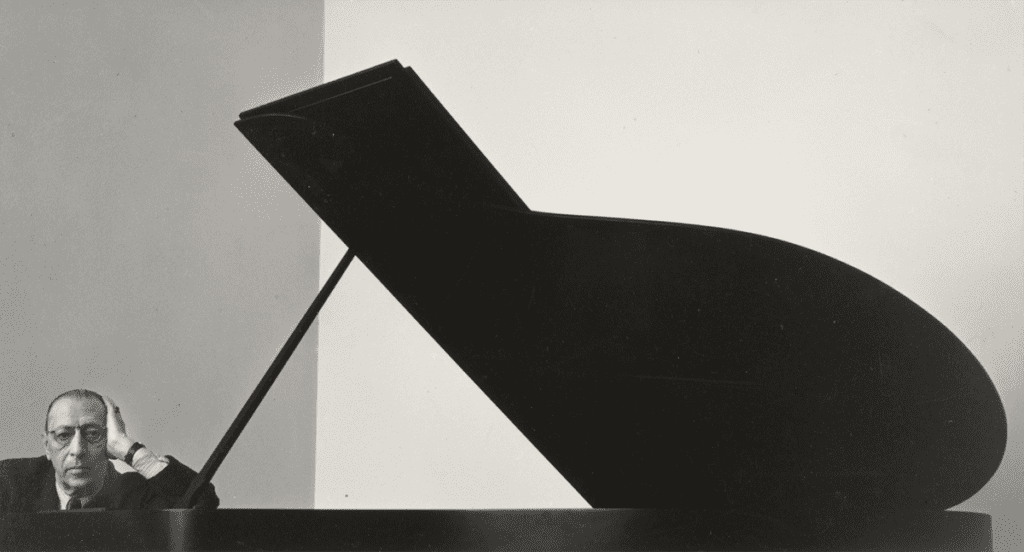
Landscape
Landscape photography aims to capture the beauty and majesty of the natural world or urban settings. The goal is to evoke a sense of place, atmosphere, or emotion tied to the environment. This genre often uses natural lighting and thoughtful composition to highlight the features of a scene.
Ansel Adams, Moonrise, Hernandez, New Mexico (1941)
Adams revolutionized landscape photography with his dramatic black-and-white images of the American West. Moonrise, Hernandez, New Mexico captures a glowing moon rising over a quiet village framed by snow-capped mountains. Adams meticulously balanced light and shadow, using his expert knowledge of exposure to create a dramatic contrast. Students can learn from this photo how technical precision, especially in lighting, is vital in transforming a landscape into an iconic image.
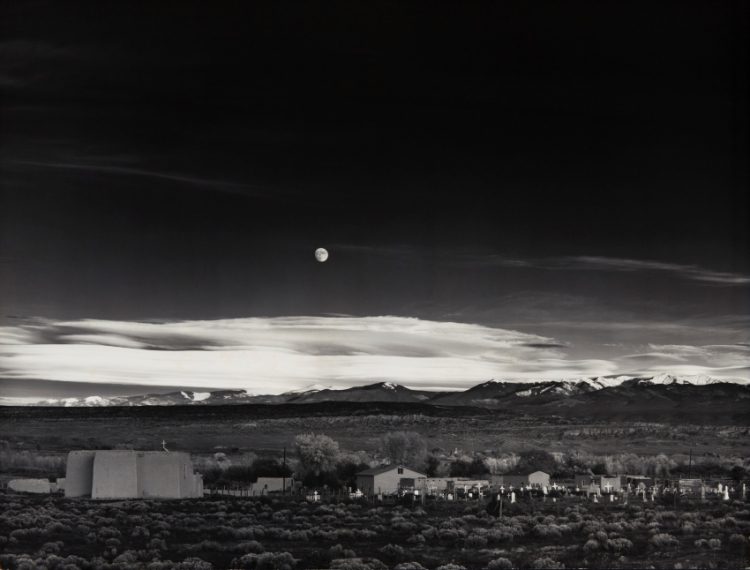
Edward Burtynsky, Oil Spill #15 (2010)
Burtynsky’s work explores the environmental impact of human industry on the planet. His large-scale photograph, Oil Spill #15, showcases the aftermath of an oil spill, transforming the natural landscape into an eerie, abstract image. It encourages students to reflect on how the genre can comment on environmental and ethical issues.
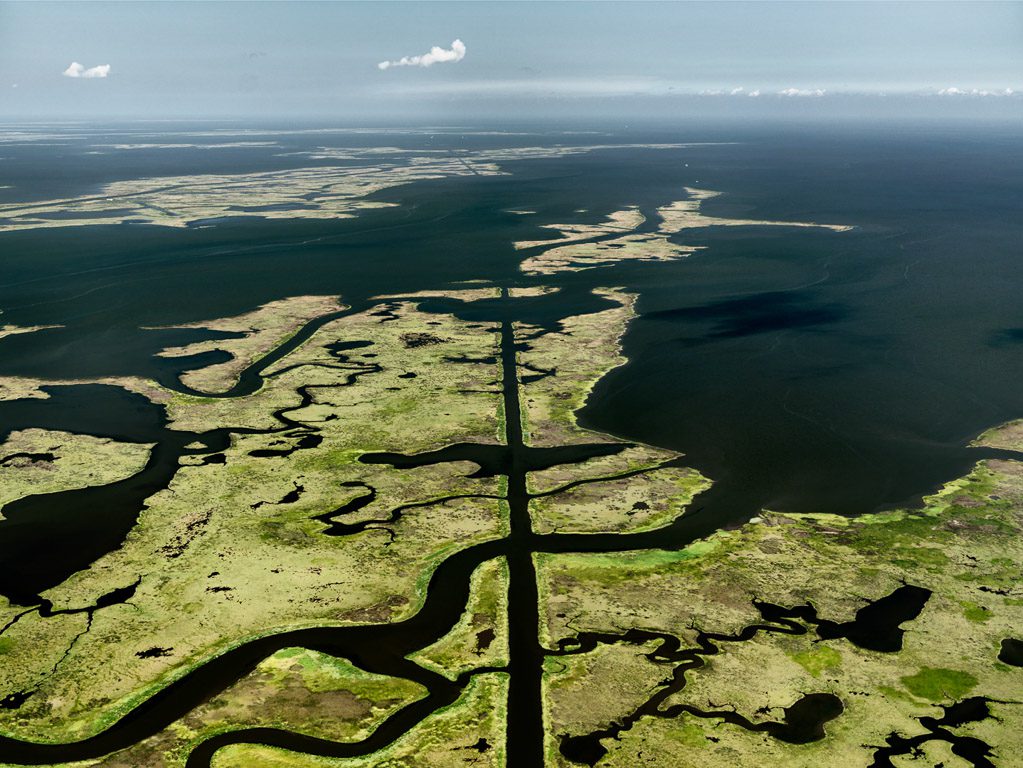
Street
Street photography captures candid moments in public spaces, often focusing on people and their interactions with their surroundings. This genre is about being in the right place and capturing the “decisive moment” that reveals a slice of everyday life.
Henri Cartier-Bresson, Behind the Gare Saint-Lazare (1932)
This iconic image captures the fleeting moment of a man leaping over a puddle behind a railway station. Cartier-Bresson, known for his concept of the “decisive moment,” demonstrates how street photography can reveal the beauty of everyday life in a split second. This image helps students explore timing and spontaneity in photography.
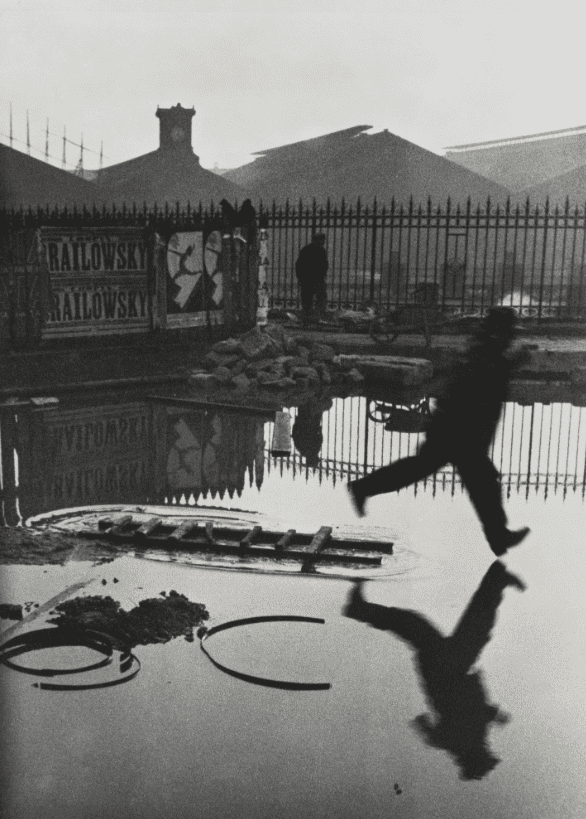
Vivian Maier, Untitled (Child sitting on the floor) 1950s
Maier worked as a nanny while secretly photographing the streets of mid-century America. Her intimate, candid portraits of ordinary people, often taken in Chicago or New York, offer an honest glimpse into urban life. Maier’s work allows students to discuss the ethics of candid photography and the importance of preserving everyday moments.
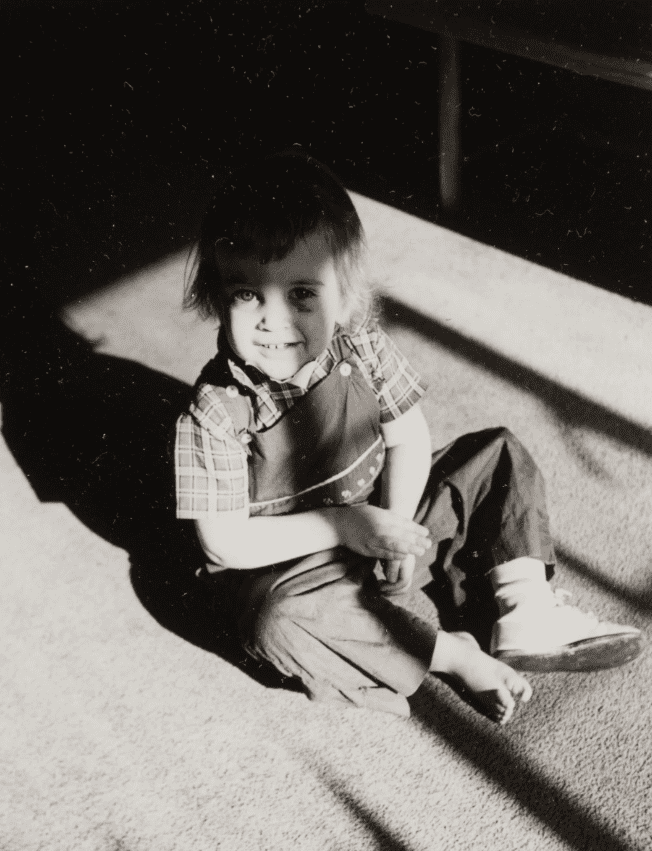
Documentary
Documentary photography seeks to tell a factual story, often about social, political, or historical issues. These images aim to capture real-life events and experiences, offering a powerful way to raise awareness and inspire change.
Gordon Parks, American Gothic (1942)
Parks, the first African American photographer for Life magazine, used his camera to document social injustice in America. His photograph, American Gothic, is a powerful commentary on racial inequality, showing a Black cleaning woman standing in front of the American flag. Discussing this image can help students understand how documentary photography can function as a form of activism. The My America Lesson in FLEX Curriculum prompts students to examine the work of Gordon Parks and his use of symbolism.
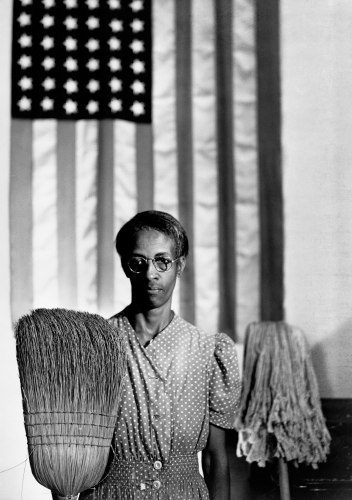
Sebastião Salgado, Amazonia (2009)
In Amazonia, Salgado captures the vast, untouched beauty of the Amazon rainforest from an aerial perspective. This image, taken from above, highlights the forest canopy’s immense scale and intricate patterns. It also offers a breathtaking view of the river systems winding through the dense jungle. The photograph emphasizes the fragile, interconnected ecosystems that thrive within the rainforest. By presenting nature in its purest form, Salgado’s work invites students to reflect on the importance of environmental preservation and the role photography plays in documenting landscapes vital to the planet’s health.
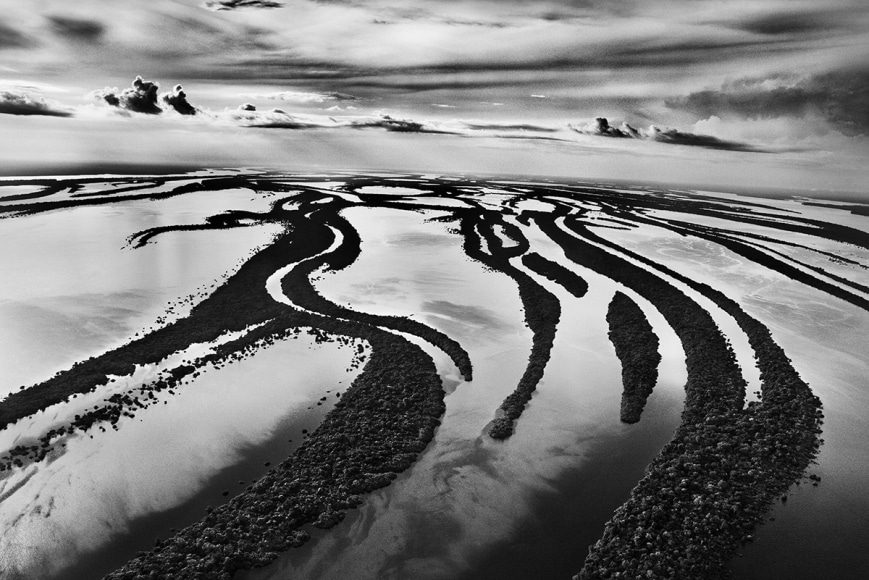
Abstraction
Abstract photography moves away from representing recognizable subject matter and instead focuses on form, color, texture, and pattern. Often created through experimental techniques like long exposures or photograms, this genre pushes the boundaries of what photography can express.
Man Ray, Rayographs (1922)
Created without a camera, Ray’s Rayographs are a pioneering example of abstract photography. Ray produced surreal, dream-like images that broke from traditional photographic practices by placing objects directly on photographic paper and exposing them to light. This technique allows students to explore abstract art. For an additional resource, take a look at Man Ray’s artist bio in FLEX Curriculum.

Wolfgang Tillmans, Freischwimmer 16 (2003)
Tillmans is known for his experimental, cameraless photography. In his Freischwimmer series, he uses light and chemicals to create ethereal images that challenge the viewer’s perception of reality. Discussing these images helps students to consider how photography can be more than just capturing a likeness—it can be a means of artistic exploration.

Teaching photography in the K-12 art room is more than just learning to take pictures—it’s about developing a deeper understanding of photography’s role in shaping history, culture, and personal expression. Each genre opens the door for rich discussions, hands-on activities, and thoughtful reflections. Show photographers from both the past and present to reinforce learning and prompt inspiration. Incorporate some of the genres above to help students connect their photography practice with the broader world of art, history, and visual literacy.
Which is your favorite photography genre to teach?
What genre of photography do you want to learn more about?
To continue the conversation, join us in The Art of Ed Community!
Magazine articles and podcasts are opinions of professional education contributors and do not necessarily represent the position of the Art of Education University (AOEU) or its academic offerings. Contributors use terms in the way they are most often talked about in the scope of their educational experiences.

